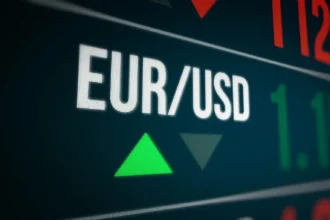Tariff Turmoil: How Trump’s Latest Trade Moves Are Roiling Markets and Clouding the U.S. Economic Outlook
U.S. stock markets experienced a rollercoaster ride this week, as a cocktail of geopolitical tensions and renewed trade friction rattled investor confidence. With Trump’s announcement of a sharp 50% tariff on Canadian steel and aluminum, Wall Street was left grappling with the potential fallout for the U.S. economy and global trade flows.
While markets initially tumbled following the White House’s surprise tariff decision, late-breaking developments—including a potential ceasefire agreement in Ukraine and fresh U.S.-Canada trade negotiations—helped recoup some of the losses. Yet, major indexes still closed lower for the day, and volatility remains elevated.
Wall Street Swings Amid Trade and Geopolitical Turbulence
Tuesday’s market selloff illustrates just how sensitive investors are to shifts in trade policy and geopolitical risk. The Dow Jones Industrial Average, S&P 500, and Nasdaq Composite all opened sharply lower after news broke of Trump’s decision to double tariffs on Canadian metals—a move widely seen as a major escalation in U.S.-Canada trade tensions.
However, later in the day, optimism crept back into the markets as news emerged that Ukraine had tentatively accepted a U.S.-brokered ceasefire proposal, pending Russia’s approval. Meanwhile, incremental progress in talks aimed at averting a broader U.S.-Canada trade war further helped stabilize sentiment.
Despite the partial recovery, the Nasdaq slipped into correction territory, officially marking a decline of over 10% from its recent highs. The S&P 500 is also flirting with correction levels, underscoring broader market fragility amid mounting global risks.
Analysts: Trade War Jitters Are Fueling Economic Anxiety
Financial experts are warning that the market’s sharp swings may signal deeper concerns over the trajectory of U.S. economic growth. “We’re seeing investors increasingly worried about the ripple effects of trade disruptions, particularly on manufacturing and small businesses,” noted a senior economist at Barclays.
Trump’s tariff announcement comes at a delicate moment for the U.S. economy. With inflation already proving sticky and consumer sentiment softening, higher import costs could exacerbate price pressures while undermining consumer and business confidence.
Small Business Uncertainty Surges to Record Levels
A key indicator flashing red is the NFIB Small Business Uncertainty Index, which spiked to a record-high reading of 110 in October—the highest since records began. Although it eased post-election in November, the index rebounded to 104 by February, reflecting persistent doubts about near-term economic stability.
Historically, uncertainty tends to rise ahead of U.S. presidential elections, as businesses and households await clarity on future policies. However, analysts caution that today’s uncertainty is being amplified by a volatile mix of geopolitical developments, trade tensions, and inflation worries.
“Prolonged uncertainty often triggers a pullback in capital spending and hiring, which could eventually filter through to the labor market,” warned the chief market strategist at Wells Fargo.
Consumer Sentiment Shows Signs of Weakening
Recent data from the New York Federal Reserve’s February consumer survey painted a similarly cautious picture. More households reported expecting their financial situation to worsen in the year ahead, a notable reversal from the wave of post-election optimism seen just months prior.
At the same time, inflation expectations ticked higher, with many respondents linking potential price increases to tariff-related costs. Higher import duties on essential commodities like steel and aluminum could drive up prices for goods ranging from automobiles to appliances, leaving consumers feeling the pinch.
The Labor Market: A Mixed Picture
Despite growing headwinds, the U.S. labor market continues to exhibit resilience. The Job Openings and Labor Turnover Survey (JOLTS) showed that job openings, hires, and quits have remained relatively stable, signaling underlying strength in labor demand.
Still, there are warning signs on the horizon. Some analysts point to the risk of federal government layoffs increasing over the next few months, especially as agencies grapple with shifting budget priorities and the potential economic fallout from tighter trade restrictions.
“While the private sector is holding up for now, public-sector employment could come under pressure if economic growth begins to decelerate,” said an economist at Morgan Stanley.
Capital Spending Plans Decline
Small businesses, a key driver of U.S. job creation, are becoming increasingly cautious. While many remain optimistic about long-term growth prospects, near-term capital spending plans suffered a sharp drop last month, according to the NFIB.
This hesitancy is being attributed to a combination of tariff uncertainty, rising borrowing costs, and geopolitical instability, which are prompting businesses to delay expansion projects and hold off on large equipment purchases.
“Tariff disruptions and fragile supply chains are making it harder for businesses to confidently plan for the future,” said the NFIB’s chief economist.
The Inflation Connection: Could Tariffs Push Prices Higher?
Economists are closely watching for signs that tariffs could add fuel to the inflation fire. Higher input costs for steel, aluminum, and other materials are likely to ripple through the supply chain, leading to elevated prices for end-consumers.
If inflation accelerates beyond current expectations, the Federal Reserve could face renewed pressure to maintain a more hawkish stance, keeping interest rates higher for longer. This scenario would further dampen consumer spending and business investment, heightening the risk of a slowdown or stagflationary environment.
Geopolitical Uncertainty Compounds the Risks
Beyond tariffs, the situation in Eastern Europe is another critical variable. The fragile ceasefire talks between Ukraine and Russia have injected fresh uncertainty into global markets. A successful resolution could ease energy market pressures and reduce geopolitical risk premiums.
However, if negotiations break down, analysts warn that energy prices could surge once again, potentially compounding inflationary pressures and deepening market volatility.
What’s Next?
For now, financial markets appear to be in a holding pattern, oscillating between relief rallies and risk-off sentiment depending on the latest headlines out of Washington and Kyiv.
Analysts say traders and businesses alike are bracing for a potentially volatile 2025, as the intersection of election-year politics, tariff policy, and geopolitical tensions creates a highly unpredictable landscape.
In the near term, much will depend on whether the U.S. and Canada can reach a resolution on tariffs, and whether Eastern European tensions ease or escalate.
Final Thoughts
While the U.S. economy remains fundamentally sound—supported by a robust labor market and steady consumer spending—the storm clouds gathering over trade policy and geopolitics cannot be ignored.
For investors, businesses, and policymakers alike, the key question now is: Will Trump’s tariff turmoil dim the U.S. economy’s lights, or will resilience and diplomatic breakthroughs keep growth on track?



